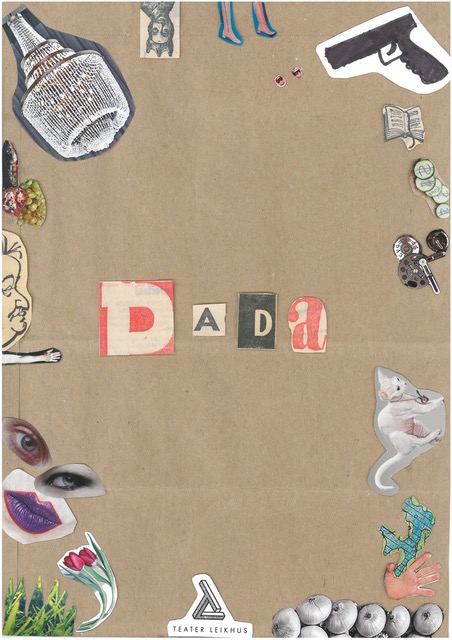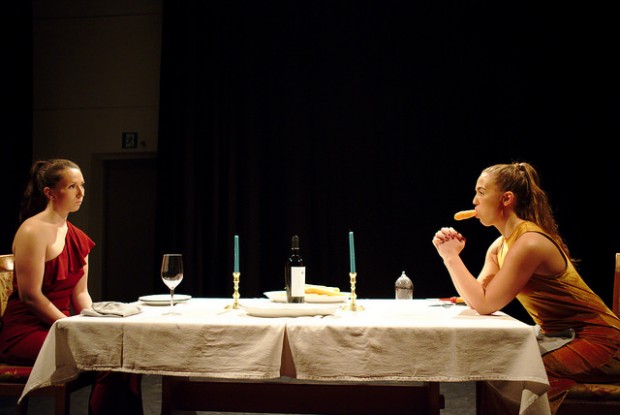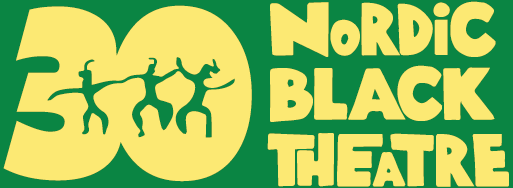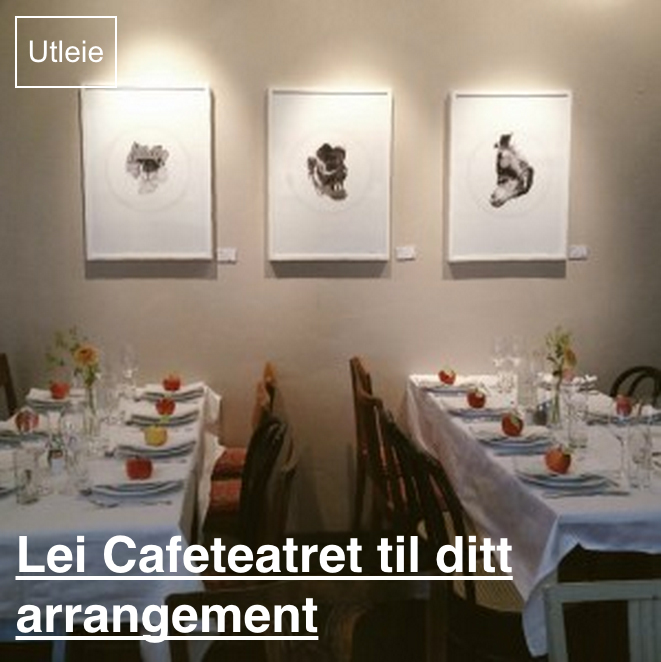DADA av Teater Leikhus
tirsdag 19. juni
kl. 20:00
Billetter kan kjøpes her (eller i døra) https://nordicblacktheatre.hoopla.no/sales/4141169994
Priser (+ billettavgift)
150,- vanlig billett
100,- studenter
85,- DTK-rabatt
200,- sponsebillett. For deg som ønsker å støtte Teater Leikhus.

Et pent dekket bord med dadaismens barnlige og tilfeldige uttrykk. På menyen står dadaismens opprør mot tradisjonelle konvensjoner og krigens brutaliteter.
Kunst og kaos.
Velbekomme.

Skuespillere: Irene Nessa Bjørnevik og Lise Andrea Grimelund-Kjelsen.
Medskapere og ide: Kathrine Grooss Tendal, Irene Nessa Bjørnevik, Lise Andrea Grimelund-Kjelsen og Eva Rosemarijn.
Regi: Eva Rosemarijn
Scenografi: Sorcha Gibson
Varighet: 45 min, men bli igjen på et glass etterpå!
Teater Leikhus er et kunstnerisk scenekollektiv. Leikhus jobber i et rom der alle former og innfall til formidlende scenekunst er mulig. Leikhus ønsker å skape forestillinger som er tilgjengelig for et bredt publikum, samtidig som motivasjonen er drevet av et engasjement for samtidsteater.
The first war is over, thousands of young men has been sent out into the fields like human ammunition, and they moved less than a mile in three months. This makes everything seem meaningless, and thoughts and lives of europeans are redefined. Dadaism reflects this with constellations that scream of life’s meaninglessness, with an experimental and humoristic point of view. Dadaism was a small art period of the 1900 century that arose after the first world war and quickly phased out into other ideas and other isms. Dadaists provoked the question of what art could be, and created the idea that “If everything is art, nothing is”. This idea is the inspiration behind Teater Leikhus` newest production “DADA”. A devised, original piece where we play with the absurdity of war, patriotism and art itself.
“And finally, stand up before dada, as if if you were in the presence of, and which accuses you of liking everything out of snobbery as soon as it costs a lot of money.”
We will look at the dadaistic period and the dadaistic ways to make art and most important – think about art. How the history surrounding the dada period made people create such surreal and “meaningless” art pieces out of the state of mind they were in. Behind these pictures and installations, that from the first glance can feel stupid and contentless, were creators in existential crises of what it means to be human in a civilized world of war. Both art and war are somehow global issues. We will explore the war the dadaists witnessed, the questions they asked in their art and link the same questions to our present. In war a life changes status from a person to ammunition. In the first and second world wars this is somehow more easy – with fronts, soldiers, a date that declares war and one that finishes it. Today war is everywhere, it can arise anytime, and we probably will never experience an end to the war and a transition into a time of peace.


